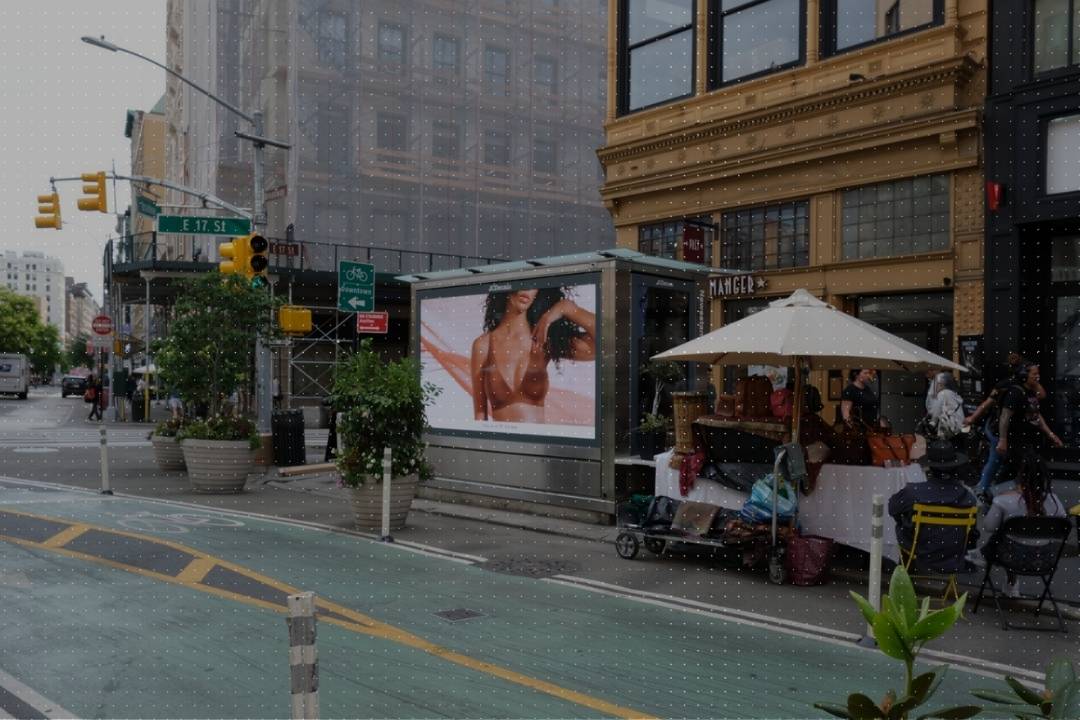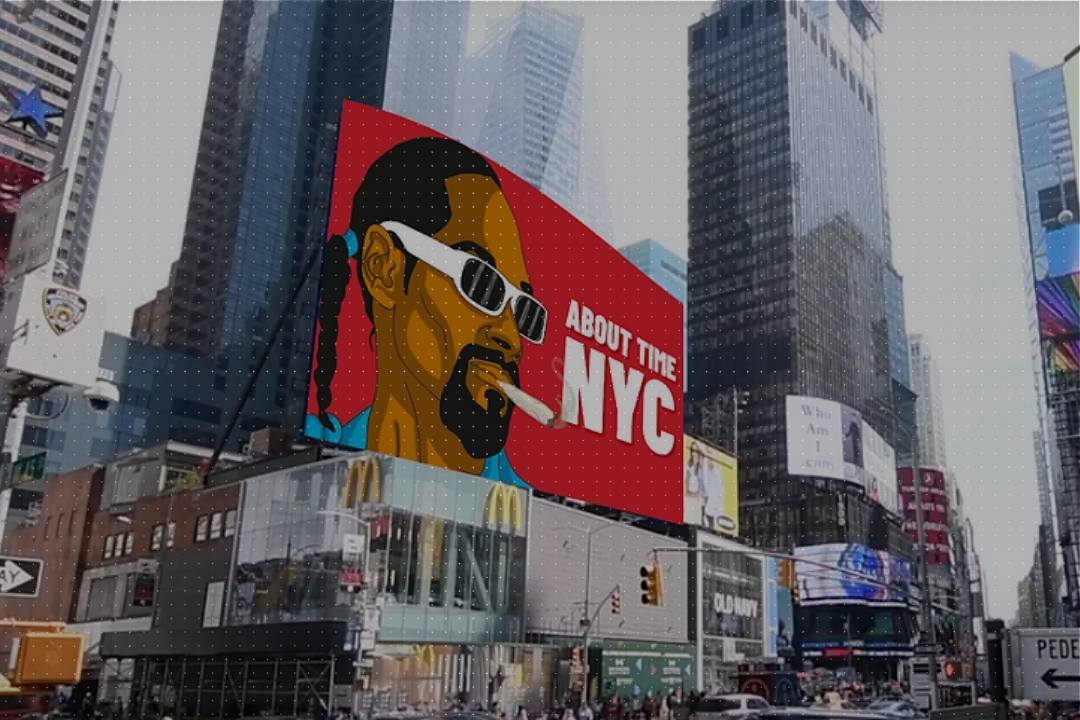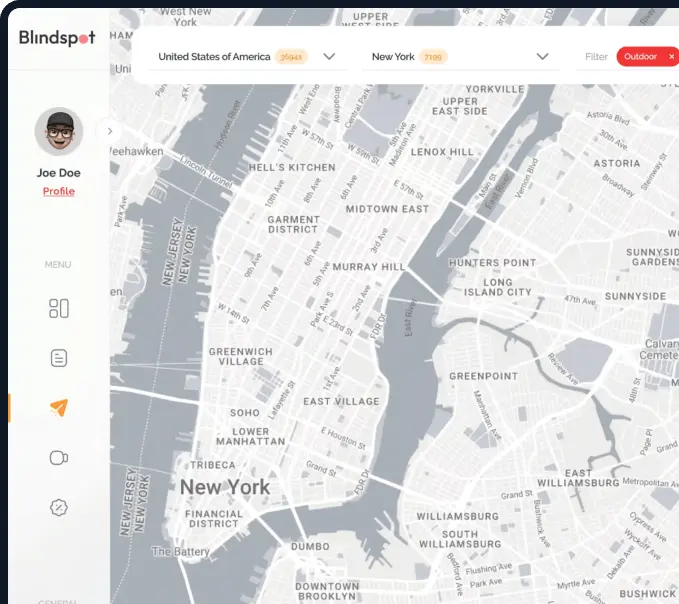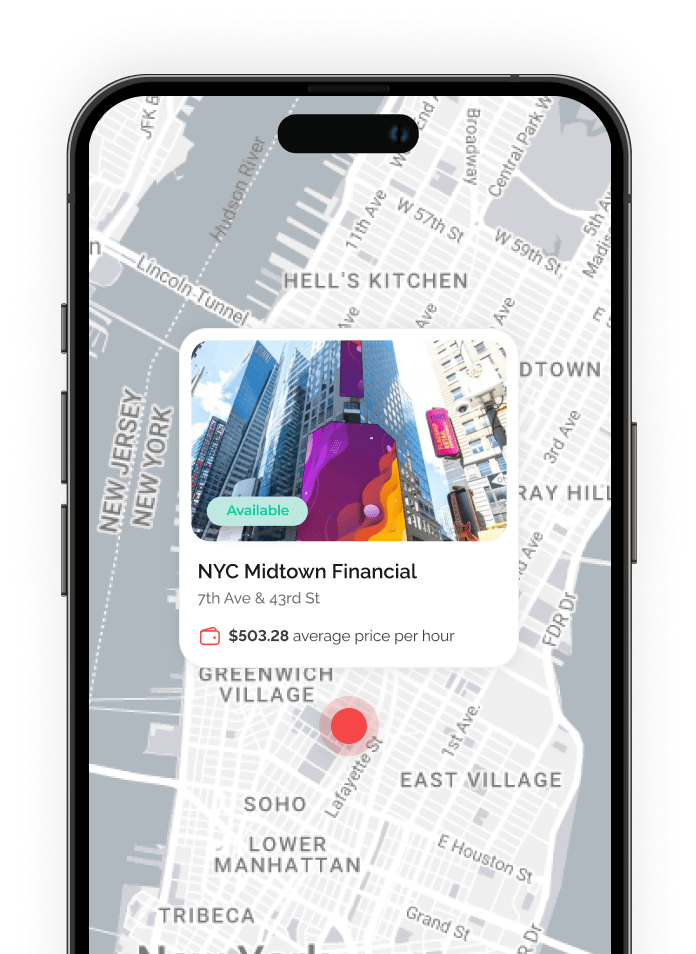Types of Billboards: Ultimate Guide to Outdoor Advertising
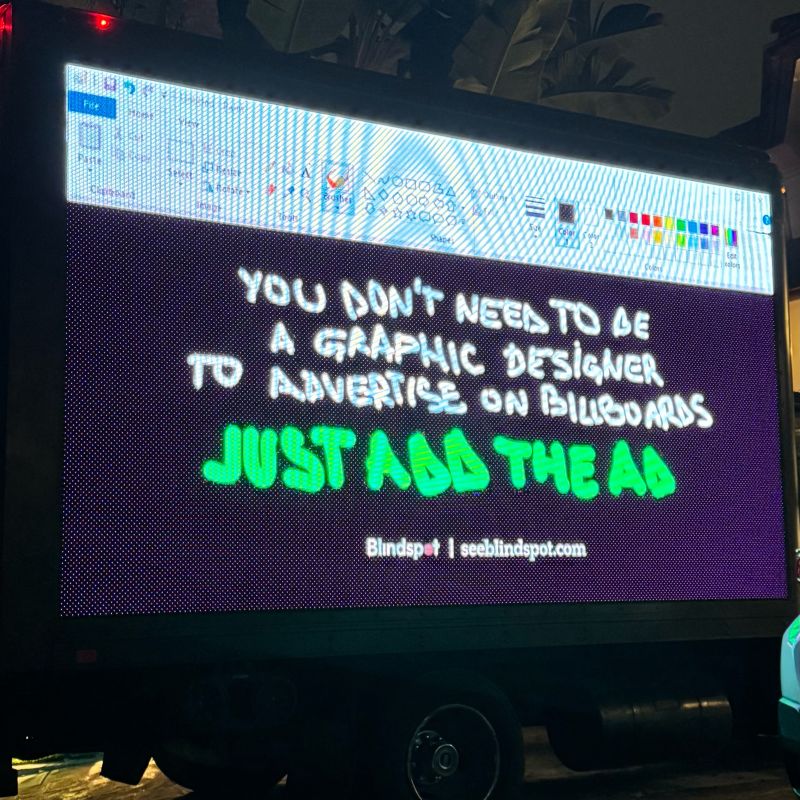
Types of Billboards – A Complete Overview
Billboard advertising has long been a staple of outdoor marketing. The rapid evolution of the billboard industry, particularly with the integration of augmented reality technology in outdoor advertising campaigns, has transformed how companies approach their advertising strategies. From towering signs along busy highways to high-tech digital screens in bustling city centers, these displays grab attention in a way few other mediums can. Yet, there’s more variety in billboard formats than many realize. Advances in technology, clever design tactics, and new placement opportunities now give brands countless ways to shine in the great outdoors.
In this guide, we’ll break down each major billboard category—traditional, digital, mobile, 3D, and more. You’ll see how they work, what they cost, and when each format is best for your campaign. By the end, you’ll have a solid grasp of which approach can help you hit your marketing goals. Let’s jump right into it!
What Are Billboard Advertisements?
Billboard advertisements are large-scale outdoor ads placed in high-traffic spots to reach passing motorists, commuters, and pedestrians. Think of them as huge canvases that make brand messages almost impossible to ignore.
They’ve come a long way over the centuries. Early billboards resembled painted murals or wooden signs. With modern printing and tech, billboards now range from simple static posters to dynamic digital displays. You’ll also hear terms like OOH (Out-of-Home) and DOOH (Digital Out-of-Home). Both refer to advertising that reaches people outside of their homes, but DOOH leverages technology to deliver more flexible and interactive formats.
No matter the style, a billboard’s job is to command attention—fast. Drivers and pedestrians only have a second or two to absorb your message, so you need to keep it punchy. Let’s explore the main billboard categories and see what makes each one effective.
Traditional (Static) Billboards
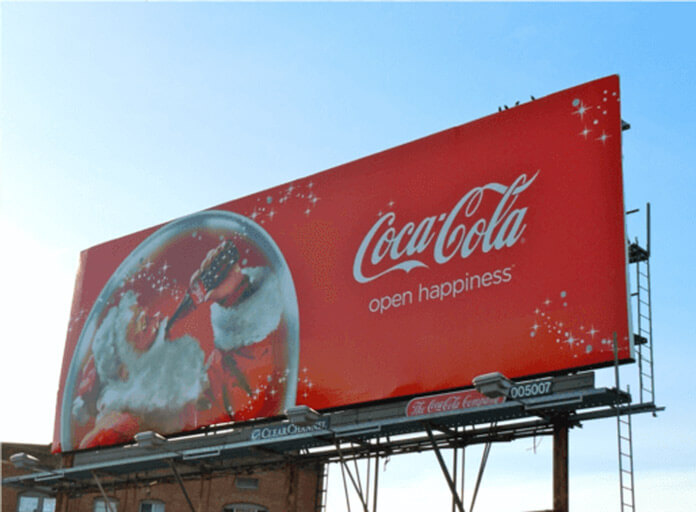
Traditional or static billboards are the classic form of outdoor advertising. They carry a single image or message, usually printed on vinyl or paper, and stay visible for an extended time. You’ve likely spotted them along highways, near shopping areas, or perched atop bustling city buildings.
• Description
A static billboard is basically a large, printed advertisement mounted on a panel. The message doesn’t change until it’s physically replaced.
• Pros
1. Consistency: Your design stays put in one location, building brand familiarity.
2. Budget-Friendly: Compared to digital, static placements can be more expensive, especially over longer periods.
3. Simplicity: A single, bold image can make your message stick.
• Cons
1. Limited Flexibility: You need new artwork every time you update your ads.
2. Less Dynamic: Without movement or lighting effects, attracting attention can be tougher.
3. Installation Time: Printing and setting up the billboard can take careful planning.
• Ideal Use Cases
If your message doesn’t need frequent updates—like announcing a grand opening or reinforcing brand recognition—a static billboard works well. It’s also a great fit for brands that want a steady presence in a specific location without constant changes.
Digital Billboards

Digital billboards use LED or LCD screens to rotate multiple ads or display animated graphics. You’ve probably seen them in busy city intersections, flashing different messages every few seconds.
• Description
Digital displays allow advertisers to upload multiple creatives, schedule content by time of day, and even change visuals in real-time.
• Pros
1. Quick Updates: Swap out creative instantly—no waiting for printing.
2. High Engagement: Bright colors, motion graphics, and transitions often catch wandering eyes more effectively.
3. Targeted Scheduling: Run your ads during peak rush hour or special events to maximize visibility.
• Cons
1. Higher Costs: All that technology typically comes at a premium.
2. Shared Space: Because ads rotate, your message might only appear part of the time.
3. Tech Glitches: Screen malfunctions can disrupt your campaign.
• Ideal Use Cases
If you need versatile messaging or plan multiple promotions, digital billboards are a standout choice. They’re also ideal for time-sensitive ads—like fast-food breakfast deals or event countdowns—because you can tweak them easily.
Mobile Billboards

Mobile billboards bring advertising right to your audience. They’re placed on vehicles—trucks, buses, cars, or even bikes—and driven to specific areas where people will see them.
• Description
A vehicle decked out with an advertisement, sometimes wrapped completely, sometimes featuring a lighted panel or LED screen. These roam the streets or park near strategic locations to capture foot traffic.
• Pros
1. Location on Demand: Cruise through high-traffic spots or park at major events.
2. Event-Ready: Great for conventions, festivals, and crowded gatherings.
3. High Visibility: A well-designed mobile ad can spark curiosity and conversation.
• Cons
1. Quick Glances: Passing vehicles give viewers only seconds to catch your message.
2. Limited Size: Even though vehicles can be large, they’re often smaller than a towering billboard.
3. Scheduling & Routes: You must plan the travel path to hit the right audience at the right time.
• Ideal Use Cases
Consider mobile billboards for product launches, short-term promos, or events where you need to create a buzz. If you want to show up where your target audience congregates—like sports arenas or nightlife districts—this could be your secret weapon.
Billboard Sizes and Formats
Billboards come in a variety of sizes and formats to cater to different advertising needs. The most common billboard sizes include:
Large Format Billboards: Typically 14 feet high and 48 feet wide, these giants dominate high-traffic areas and are perfect for long-distance visibility. Think of them as the heavyweights of outdoor advertising, ideal for making a big, bold statement that can’t be missed.
Standard Billboards: Usually 10 feet high and 20 feet wide, these are the go-to choice for urban areas. They strike a balance between size and visibility, making them suitable for targeted advertising in bustling city environments.
Small Format Billboards: At around 6 feet high and 12 feet wide, these are perfect for local businesses and community advertising. They offer a more intimate approach, ideal for reaching audiences in specific neighborhoods or local hotspots.
In addition to size, billboards also come in different formats, each offering unique advantages:
Static Billboards: These traditional billboards display a single image or message, providing consistent visibility over an extended period. They’re perfect for campaigns that don’t require frequent updates, like brand reinforcement or long-term promotions.
Digital Billboards: These electronic marvels can display multiple ads and messages, making them ideal for dynamic advertising campaigns. With the ability to update content in real-time, digital billboards offer unparalleled flexibility and engagement.
Mobile Billboards: Mounted on trucks or trailers, these billboards can be moved to different locations, making them perfect for targeted advertising and event promotions. They bring your message directly to your audience, wherever they are.
By choosing the right size and format, you can tailor your billboard campaign to meet your specific advertising goals and reach your target audience effectively.
Specialty Billboards
Specialty billboards are designed to cater to specific advertising needs and offer unique features that set them apart from traditional billboards. These innovative formats can create memorable and engaging experiences for viewers:
Painted Billboards: Hand-painted billboards offer a touch of artistry and creativity that printed ads can’t match. They are perfect for campaigns that want to convey a unique, handcrafted feel, adding a personal touch to your advertising.
Interactive Billboards: These billboards invite viewers to engage directly with the ad, creating an immersive experience. Whether it’s through touchscreens, motion sensors, or QR codes, interactive billboards can boost engagement and make your message more impactful.
Augmented Reality Billboards: Using augmented reality technology, these billboards create interactive and immersive ads that blend the physical and digital worlds. Viewers can use their smartphones to see additional content, making the ad experience more engaging and memorable.
Specialty billboards offer a range of creative possibilities, allowing you to craft unique and compelling advertising campaigns that stand out from the crowd.
Outdoor Advertising Options
Outdoor advertising offers a range of options beyond traditional billboards, each with its own unique advantages:
Transit Advertising: This includes ads on buses, trains, and train stations, making it ideal for targeting commuters and urban audiences. Transit ads can reach a captive audience during their daily routines, ensuring high visibility and frequent exposure.
Street Furniture: Ads on bus shelters, benches, and other street furniture are perfect for targeted and local advertising. These placements are often at eye level, making them hard to miss for pedestrians and commuters alike.
Retail Advertising: Placing ads in shopping malls, stores, and other retail environments allows you to target consumers when they’re already in a buying mindset. Retail ads can drive immediate action, promoting products and special offers directly to shoppers.
Event Advertising: Ads at events, festivals, and concerts are ideal for targeting specific audiences and promoting products or services. Event advertising can create a buzz and generate excitement, making your brand a part of the experience.
By exploring these outdoor advertising options, you can find the perfect medium to reach your target audience and achieve your marketing goals.
Other Niche Billboard Types
Sometimes, a typical static or digital billboard just won’t do. That’s where niche formats come in, offering a more specialized or unconventional approach to outdoor ads.
• Transit Shelter Posters
Placed directly in bus shelters, these smaller posters reach commuters waiting for their rides.
• Taxi Tops
Seen in bustling cities, these ads rest on top of taxis, reaching passersby and passengers in traffic-heavy zones.
• Wallscapes
These ads span entire building walls, creating an eye-catching display in busy urban corridors.
• Building Wraps
Similar to wallscapes but on an even grander scale, wrapping large parts of a building’s exterior.
• Wild Postings
Groups of similar posters pasted together on street-level walls or construction barriers, often giving a cool, artsy, collage vibe.
Pick a niche format if you’re targeting a specific neighborhood demographic or want an unconventional look that screams creativity. Some of these can also be more budget-friendly if you’re focusing on hyper-local audiences.
Cost Factors Across Different Billboard Types
Cost matters. Billboard campaigns can range from relatively affordable to quite pricey, depending on:
• Location & Traffic
High-traffic areas demand higher rates. You’re paying for sheer volume of eyeballs.
• Duration
Shorter campaigns might be more expensive per month, while longer commitments often come with lower monthly rates.
• Production & Installation
Static vinyl printing, digital ad creation, or complicated 3D builds all factor into your budget.
• Peak Seasons
Expect price fluctuations around holidays, big events, or tourism surges.
• Extra Services
Some providers offer design help or advanced data tracking. These can boost your success but also add to the final bill.
Remember: While digital billboards often carry higher price tags, they also provide flexibility you can’t get with static designs. Ultimately, your decision should match what you want to accomplish—and how much you’re comfortable investing.
How to Choose the Right Billboard Type for Your Campaign
With so many choices, where do you start? Narrow things down by looking at:
• Audience
Does your target market ride public transport? Then transit shelters could be brilliant. Do they spend hours in cars? Highways might be your prime turf.
• Creative Goals
Need multiple visuals or time-sensitive offers? Digital’s your friend. Want a single, bold statement? Static could do the trick.
• Overall Campaign Aim
Are you building brand awareness? Then aim for large, eye-level displays. Trying to boost immediate actions like a website visit or store purchase? Make sure your billboard includes a clear call to action, possibly even a QR code or short URL.
By matching the billboard type to your core strategy (and budget), you’ll maximize return on investment while delivering a memorable message.
Effective Billboard Advertising Strategies
To create effective billboard advertising campaigns, consider the following strategies:
Target Your Audience: Use demographic data and location targeting to ensure that your ad is seen by the right people. Understanding where your target audience spends their time can help you choose the best billboard locations.
Keep It Simple: Use clear and concise messaging and visuals to grab attention and communicate your message. Remember, viewers only have a few seconds to absorb your ad, so make every word and image count.
Use Eye-Catching Visuals: High-quality images and graphics can make your ad stand out. Bold colors, striking designs, and compelling visuals can draw the eye and make your message memorable.
Use Digital Billboards: Digital billboards offer the ability to display multiple ads and messages, making them ideal for dynamic advertising campaigns. They allow for real-time updates and targeted scheduling, maximizing your ad’s impact.
Measure and Optimize: Use data and analytics to measure the effectiveness of your campaign and optimize your ad for better results. Track metrics like website traffic, foot traffic, and social media engagement to gauge your ad’s performance and make necessary adjustments.
By following these strategies and using the right billboard sizes and formats, specialty billboards, and outdoor advertising options, you can create effective billboard advertising campaigns that reach and engage your target audience.
Competitor Insights & Content Gaps
It’s always smart to survey your competitors’ billboard campaigns. But don’t just copy—find gaps. If they’re only using static boards, you might beat them with digital or mobile.
According to the Outdoor Advertising Association of America, a high percentage of consumers remember billboard advertisements, highlighting the effectiveness of visual ads in outdoor advertising.
Also consider how you’ll weave in brand personality. Whether you use humor, bold visuals, or a compelling tagline, do something that sets you apart. Outdoor advertising can be fresh, fun, and unexpected—so don’t hold back if you have a concept that’ll turn heads.
Common Mistakes to Avoid in Billboard Advertising
We all learn from missteps. Here are some you’ll want to skip:
• Cramming in Text
Overly busy designs are tough to read from a distance. Keep it simple: a short headline, one main visual, maybe a tagline.
• Poor Location Targeting
Even the coolest design won’t matter if your billboard sits where your audience rarely goes. Research traffic flow, local demographics, and foot traffic patterns.
• Not Allowing Enough Lead Time
Static billboards need printing and installation. Digital boards might require design and scheduling. Plan ahead so you’re not scrambling at the last minute.
• Forgetting a Digital Connection
Consider adding a website or hashtag that encourages a quick follow-up action. Outdoor ads might be offline, but you can still drive online behaviors.
Avoiding these blunders will help your billboard campaign hit harder from day one.
Frequently Asked Questions (FAQs)
Q: Which billboard format is the most cost-effective?
A: It depends on factors like campaign length, location, and how often you plan to update your ads. Digital billboards can be cheaper for long stretches, while mobile boards might be more economical if you only need a short burst in a specific region.
Q: Can small businesses benefit from billboard advertising?
A: Definitely. Smaller brands often thrive with hyper-local placements like transit shelters or wallscapes in targeted city blocks. The key is focusing on the right location to reach your specific audience.
Q: How do I measure a billboard’s impact?
A: Since you can’t measure clicks, track results by looking at website analytics (especially direct traffic), foot traffic to physical locations, or custom discount codes. Spikes shortly after your billboard goes live are a good indicator that it’s working.
Remember, outdoor advertising hinges on location, timing, and creativity. Want to boost brand recognition in a bustling city center or make a splash at a special event? Explore our platform to find the perfect billboard format for your brand! And don’t hesitate to reach out if you’re looking for tailored recommendations to match your marketing goals.
As you can see, there’s no one-size-fits-all approach to billboards. From static displays that reinforce a single, powerful message to dynamic DOOH screens that let you tweak content on the fly, each format has unique benefits and challenges. Deciding which one to use boils down to budget, audience, creative flair, and specific campaign objectives.
Billboard advertising may be one of the oldest forms of marketing, but it’s continuously evolving in design and technology. Whether you’re just testing the outdoor waters or sharpening a seasoned media strategy, understanding these different billboard options will guide you toward more effective campaigns.
